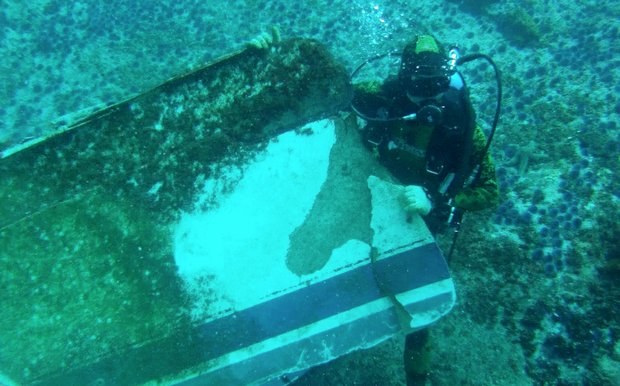
Aegean Final Report: “Inadequate Lookout”

West Coast sailors were delivered a one-two punch this spring when two tragic accidents just two weeks apart took a total of nine lives. First, Low Speed Chase went ashore at the Farallones on April 14 during the Full Crew Farallones Race, killing five of the eight crewmembers. Then on April 28, the Hunter 376 Aegean ran into North Coronado Island during the Newport to Ensenada race, taking all four crewmembers. US Sailing’s report on the LSC incident was released in early August, while Aegean‘s was released yesterday (click here to download the full report).
As predicted, the investigative panel — which included West Coast sailors Bruce Brown (chairman) and Alan Andrews, and special consultants such as Evans Starzinger and Chuck Hawley — found that "a key element of the accident was likely an inadequate lookout, and that it is likely that Aegean inadvertently motored beyond a waypoint set before North Coronado Island." Three of the victims — owner/skipper Theo Mavromatis, 49, Kevin Rudolph, 53, and William Johnson, 57 — died of blunt force trauma, while Mavromatis’s brother-in-law Joe Stewart, 64, died of drowning due to traumatic injuries.

© Latitude 38 Media, LLC
The 119-page report went on to detail the presumed events of April 27-28, which are as telling as they are grisly. The panel believes the boat had been motoring under autopilot for several hours when it struck the island at about 1:36 a.m. The SPOT device onboard had been steadily transmitting the boat’s position, and pinged once more two minutes after the boat hit the rocks. Then at 1:43 — three minutes before it was set to ping again — the device was manually activated to send a 911 message by someone aboard. At 1:44 and 1:45 a.m., two voicemails were left on Mavromatis’s wife’s phone. Sadly, none of these messages were retrieved until 9 a.m.

Flotsam at the site, a large debris field nearby, the recovery of the bodies and the eventual discovery of underwater wreckage — including the boat’s engine — at the island leave no doubt that Aegean ran into North Coronado Island. Though the panel determined that an inadequate lookout was the primary cause of the accident, during their investigation they discovered additional safety issues that could be addressed to prevent future accidents:
1. Always maintain a lookout, with a watch of at least two people, using audible waypoint and radar alarms.
2. Racers need to be made aware of the light obscuration zones in the Coronado Islands.
3. Each watch must understand the operation of the boat’s navigation systems.
4. The use of autopilots while motoring should be reviewed by race organizers.
5. To improve communication, racers should monitor VHF 16 and race organizers should provide a 24-hour emergency contact.
6. US Sailing should create a guide to emergency signaling devices.
7. US Sailing should create a crisis management template for race organizers.
The last item on the list would undoubtedly be appreciated by race officials as most smaller races are run by volunteers who rarely have the time and/or knowledge to significantly update race rules. Serious accidents happen so rarely — no matter what the mainstream media want you to believe — that inexperienced race officers might easily get flustered during an emergency. Having a guide or checklist to follow when things are getting crazy would help ensure nothing gets missed.
As they have been since April, our thoughts are with the families and friends of those killed in these terrible accidents. Hopefully we can all learn something that will make us safer on the water, not the least of which is to always maintain a proper lookout.
